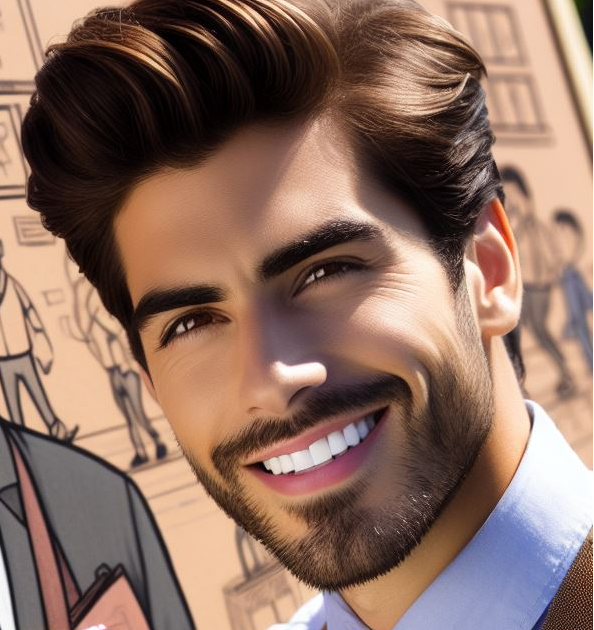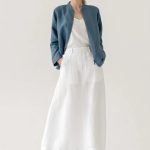Introduction
When faced with toxicity, sharp comebacks can deflect negativity and set clear boundaries, fostering healthier interactions and safeguarding your well-being.
Dealing with toxic people can be challenging. Whether it’s at work, in social circles, or even within our families, managing toxic behaviour is crucial for our well-being. This article offers over 70 sharp comebacks designed to help you navigate these situations with confidence and poise. From witty retorts to firm responses, each suggestion aims to empower you in
Next time you encounter negativity or manipulation, remember that your response matters. Choose from these ready-made comebacks to assert boundaries and maintain your peace of mind. Don’t let toxic behaviour go unchecked—equip yourself with the right words to assert yourself respectfully and effectively.
In this comprehensive guide, you’ll find a variety of comebacks suited for different scenarios. Whether you’re dealing with passive-aggressive remarks, outright hostility, or subtle undermining, there’s a comeback here to help you assert yourself confidently. Each suggestion is crafted to help you navigate challenging interactions and protect your well-being.
1. Comebacks for Toxic People Who Belittle You

- “Your opinion doesn’t define me.”
- Assert your independence and self-worth, showing that others’ opinions cannot dictate your value or choices.
- “I won’t let your negativity affect me.”
- Emphasize your resilience and determination not to be swayed by someone else’s pessimism or criticism.
- “I’m confident in who I am, regardless of your criticism.”
- Affirm your self-assurance and reassure yourself that you are secure in your identity and decisions.
- “Constructive feedback is helpful, not insults.”
- Differentiate between constructive criticism, which aids growth, and insults, which serve no constructive purpose.
- “Your words say more about you than they do about me.”
- Shift the focus back to the speaker, highlighting that their criticisms reveal more about their character than yours.
- “I value myself too much to listen to your put-downs.”
- Express your self-worth and declare your refusal to internalize negative remarks or insults.
- “I’m focused on positive growth, not your negativity.”
- Redirect the conversation to your personal development and goals, showing that you prioritize positivity over criticism.
- “I deserve respect, just like everyone else.”
- Assert your right to be treated with respect, setting clear expectations for how you expect to be treated.
- “Your words may hurt, but they won’t deter me.”
- Acknowledge the impact of hurtful words while demonstrating your resilience and determination to persevere.
- “I’m proud of my choices, despite your disapproval.”
- Affirm your confidence in your decisions, regardless of whether they align with others’ expectations or not.
Good Comebacks for Your Parents: From Respectful to Nuclear
2. Comebacks for Toxic People Who Criticize Everything
- “I value your perspective, but I’ll stick with my approach.”
- Acknowledge the other person’s viewpoint while asserting your commitment to your own methods or decisions.
- “I appreciate your input, but I trust my judgment.”
- Express gratitude for their feedback while asserting your confidence in your ability to make decisions.
- “Constructive feedback is welcome, not constant criticism.”
- Differentiate between constructive advice, which is helpful, and relentless criticism, which serves no productive purpose.
- “I’m open to different opinions, but not relentless negativity.”
- Express openness to alternative viewpoints while setting boundaries against persistent negativity.
- “I’m confident in my decisions, despite your doubts.”
- Affirm your self-assurance and conviction in your choices, regardless of others’ skepticism.
- “I’m focused on progress, not perfection.”
- Emphasize your commitment to improvement and growth rather than meeting unrealistic standards of perfection.
- “I understand your concerns, but I’ll proceed as planned.”
- Acknowledge their concerns while reaffirming your decision to move forward with your chosen course of action.
- “I’m grateful for your advice, but I’ll do it my way.”
- Appreciate their input while asserting your autonomy and preference for following your own approach.
- “I’ll take your feedback into account, but I’m sticking with my choice.”
- Acknowledge their feedback while making it clear that you have considered it but have chosen to proceed differently.
- “I appreciate your perspective, but I’m following my instincts.”
- Value their viewpoint while asserting your trust in your instincts and intuition in making decisions.
3. Comebacks for Toxic People Who Are Way Too Nosy
- “I prefer to keep some aspects of my life private.”
- Assert your boundary and preference for privacy regarding certain aspects of your personal life.
- “I appreciate your curiosity, but I’m not comfortable discussing that.”
- Acknowledge their interest while politely declining to engage in a conversation about a particular topic.
- “Let’s focus on more appropriate topics.”
- Redirect the conversation to a more suitable or neutral subject that you are comfortable discussing.
- “I’ll share what I’m comfortable sharing.”
- Reaffirm your control over what information you choose to disclose, emphasizing consent in sharing personal details.
- “That’s personal information.”
- Assert that the topic in question is private and not up for discussion or disclosure.
- “I’d rather not discuss that right now.”
- Politely decline to engage in a conversation about a sensitive or personal matter at the present moment.
- “Let’s change the subject, shall we?”
- Suggest shifting the conversation to a different topic to steer away from intrusive inquiries.
- “I’ll let you know if I decide to share that information.”
- Assert your autonomy in deciding whether or not to share specific details and indicate openness to future disclosure if you choose.
- “I value my privacy.”
- Affirm the importance of maintaining personal boundaries and protecting your privacy.
- “I prefer not to answer that question.”
- Politely decline to respond to a nosy question, asserting your right to withhold information when desired.
4. Comebacks for Toxic People Who Love Gossip and Drama
- “I’d rather not participate in gossip.”
- Clearly state your refusal to engage in gossip, setting a boundary against spreading rumors or hearsay.
- “Let’s avoid spreading rumors.”
- Encourage a more responsible and respectful conversation by discouraging the dissemination of unverified information.
- “I prefer to focus on positive discussions.”
- Redirect the conversation toward constructive and uplifting topics rather than gossip or drama.
- “Gossip doesn’t benefit anyone.”
- Highlight the negative impact of gossip, emphasizing its lack of productive value for anyone involved.
- “I’m not interested in gossip.”
- Assert your disinterest in engaging in discussions centered around gossip or rumors.
- “Let’s discuss something more uplifting.”
- Suggest shifting the conversation to a more positive and meaningful topic.
- “I’d rather not talk about others.”
- Express your preference for avoiding conversations that involve discussing or speculating about other people.
- “Let’s keep the conversation positive.”
- Encourage a more constructive dialogue by steering away from negative or gossip-filled discussions.
- “I don’t find gossip entertaining.”
- Express your lack of interest in gossip as a form of entertainment or conversation topic.
- “Let’s focus on more productive topics.”
- Redirect the conversation toward subjects that are more beneficial and conducive to positive interactions.
5. Comebacks for Toxic People Who Play the Victim
- “Taking responsibility is crucial in every situation.”
- Emphasize the importance of accountability and honesty in addressing issues rather than adopting a victim mentality.
- “Let’s focus on finding solutions together.”
- Encourage collaborative problem-solving instead of dwelling on perceived injustices or victimhood.
- “Playing the victim doesn’t solve problems.”
- Challenge the unproductive habit of using victimhood as a way to avoid responsibility or accountability.
- “I’m here to support you, but let’s address this honestly.”
- Offer support while gently encouraging the individual to confront challenges with honesty and clarity.
- “I have a different perspective.”
- Assert your viewpoint while acknowledging a divergence in how each person perceives a situation.
- “Let’s talk about what we can do to move forward.”
- Shift the focus toward proactive discussions aimed at resolving issues and achieving positive outcomes.
- “I understand your feelings, but let’s consider the bigger picture.”
- Validate their emotions while encouraging them to consider the broader context or implications of their actions.
- “I’m willing to help, but we need to address the issue head-on.”
- Express readiness to assist while emphasizing the importance of addressing challenges directly and effectively.
- “Let’s find a constructive way to resolve this.”
- Encourage the exploration of productive and constructive solutions to overcome challenges or conflicts.
- “I’m here to listen, but I won’t accept blame unfairly.”
- Offer a listening ear while maintaining boundaries against accepting unwarranted blame or guilt.
6. Comebacks for Toxic People Who Use Gaslighting Tactics
- “I trust my own perceptions.”
- Assert confidence in your ability to perceive and interpret situations accurately, despite attempts to distort or invalidate your experiences.
- “Gaslighting isn’t acceptable behavior.”
- Clearly state your disapproval of gaslighting tactics, setting a firm boundary against manipulative behaviors.
- “I won’t doubt myself because of your comments.”
- Affirm your self-assurance and refusal to second-guess yourself due to someone else’s attempts to undermine your confidence.
- “Let’s focus on facts, not distortions.”
- Redirect the conversation toward objective facts and reality, discouraging the use of misleading or deceptive information.
- “I’m aware of what’s happening.”
- Assert your awareness and understanding of the situation, maintaining clarity and perspective despite attempts to confuse or mislead.
- “I’m confident in my memory.”
- Affirm your trust in your own memory and recollection of events, resisting efforts to distort or rewrite history.
- “I won’t be manipulated.”
- Assert your refusal to be manipulated or coerced into questioning your perceptions or beliefs.
- “I know my truth.”
- Affirm your confidence in your personal truth and experiences, maintaining a strong sense of self-awareness and authenticity.
- “Your words won’t change reality.”
- Acknowledge the attempt to distort reality while asserting the permanence and validity of objective facts.
- “I see through your tactics.”
- Convey your awareness and understanding of manipulative tactics, signaling an end to attempts to deceive or manipulate.
7. Comebacks for Toxic People When You Need to Walk Away
- “I need some space right now.”
- Assert your need for personal space and distance to manage emotions or stress effectively.
- “I think it’s best if we both take a break.”
- Suggest a mutual pause or hiatus from the conversation or interaction to prevent escalation or emotional distress.
- “I’m feeling overwhelmed and need to step back.”
- Express feelings of being overwhelmed and the necessity of taking a step back to regain composure and perspective.
- “Let’s revisit this when emotions aren’t running high.”
- Suggest postponing further discussion until emotions have subsided, facilitating a more productive and respectful dialogue.
- “I need time to process everything.”
- Communicate the need for time and space to process information or emotions before engaging further.
- “I’m going to take a walk to clear my head.”
- Indicate a physical action to manage emotions and regain clarity, promoting self-care and emotional well-being.
- “I’ll be back when I’m ready to discuss this calmly.”
- Assure a return to the conversation or interaction once emotions have been regulated and a calm discussion is possible.
- “I need some time alone to think things through.”
- Express the need for solitude and reflection to evaluate thoughts or decisions independently.
- “Let’s table this conversation for now.”
- Suggest temporarily suspending the discussion or topic of conversation until a later time or date.
- “I’m going to step away from this situation.”
- Communicate a deliberate choice to remove oneself from a challenging or stressful situation for personal well-being.
8. Bonus: A Little Lightness

- “You must have mistaken me for someone who cares.”
- Employ humor to subtly deflect unwanted comments or criticism, highlighting the insignificance of their opinion.
- “I’d agree with you, but then we’d both be wrong.”
- Use wit to playfully dismiss a disagreeable statement or perspective, injecting humor into the conversation.
- “I’m sorry, I didn’t realize you were an expert in everything.”
- Employ sarcasm to challenge a presumptuous or know-it-all attitude, subtly asserting your own perspective.
- “Do you ever wonder why people don’t like talking to you?”
- Use humor to indirectly address unpleasant behavior or conversation habits, encouraging self-reflection.
- “Your drama is more exhausting than a full-time job.”
- Employ humor to playfully critique excessive drama or exaggerated reactions, injecting levity into the interaction.
- “I didn’t realize we were still in middle school.”
- Use light-hearted sarcasm to address immature or petty behavior, emphasizing the need for more mature communication.
- “Do you need a map to find your way out of this conversation?”
- Playfully suggest ending a conversation that has become unproductive or tiresome, using humor to lighten the mood.
- “If you have something constructive to say, I’m all ears.”
- Encourage productive communication by inviting constructive feedback or meaningful contribution to the conversation.
- “I think your sarcasm detector needs new batteries.”
- Employ humor to playfully address someone’s attempt at sarcasm or wit, adding humor to the exchange.
- “Next time, try being a little less predictable.”
- Playfully challenge predictable behavior or responses, encouraging more original and thoughtful communication.
Important Considerations
Respectful communication is crucial in handling toxic interactions effectively. When using these comebacks, consider the context and the individual’s personality.
Knowing When to Use Which Comebacks
Adapt your response based on the situation and your relationship with the person. Choose your battles wisely and prioritize your well-being.
When Comebacks Don’t Cut It
Sometimes, the best response is no response. Know when to walk away and disengage from toxic interactions for your own mental and emotional health.
Conclusion
In dealing with toxic individuals, having a repertoire of cutting comebacks can be empowering. Whether it’s deflecting negativity or setting boundaries, effective communication is key.
Remember, self-care is just as important as handling others’ toxicity. Use these comebacks wisely, always aiming for assertiveness over aggression. By maintaining emotional intelligence and self-confidence, you can navigate challenging interactions with grace and resilience.
Ultimately, mastering the art of comebacks is about fostering healthier relationships and protecting your own well-being.












